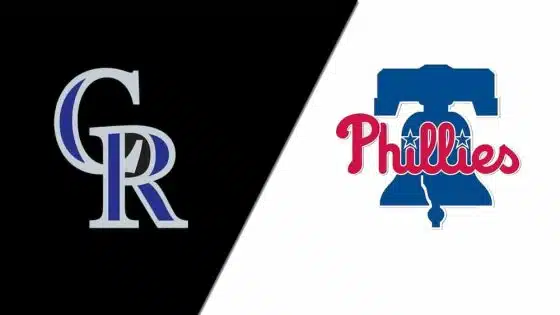By Kevin Durso, Sports Talk Philly editor
The plaque in the Hall of Fame bearing his name reads "Don Richard Ashburn." But Richie Ashburn was affectionately known to the Philadelphia fans as "Whitey."
Richie Ashburn is one of the most synonymous figures in franchise history, whether you can remember his playing days with the Whiz Kids in the 1950s or remember his partnership in the booth with the great Harry Kalas, Ashburn was always around the Phillies.
The Hall of Famer was also one of baseball's best players in the 1950s. In an era dominated by the likes of Mickey Mantle and Joe Dimaggio, Ashburn was a combination of speed and hitting. He was a career .308 hitter, one of the best table-setters in baseball. He didn't do it with power — Ashburn had just 29 home runs among his 2,574 hits — but he could effectively get on base and was a tremendous baserunner and outfielder.
Ashburn broke into the majors with the Phillies in 1948 and brought a boyish Midwestern charm to the city of Philadelphia. He was humble, a down-home kind of athlete. He wasn't overly flashy in any one field, but he was consistent. That helped make him a six-time All-Star, a two-time batting champion and a regular leader in fielding percentage.
He spent 12 of his 15 major league seasons with the Phillies before being traded to the Cubs in 1960 and finishing his career in 1962 with the New York Mets. Over 30 years after his baseball playing career ended, he was inducted into the Hall of Fame as part of the Veterans Committee in 1995 alongside Mike Schmidt.
Career accomplishments
- Six-time All-Star, four with the Phillies (1948, 1951, 1953, 1958, 1962 – two All-Star Games were played in 1962 and Ashburn played in both as a representative of the Mets)
- Finished 3rd in 1948 Rookie of the Year voting
- Hit over .300 in nine different seasons (eight times with Phillies)
- Batting champion in 1955 (.338) and 1958 (.350)
- Ranks tied for 89th all-time in MLB history in career hits (2,574)
Most memorable moment
With Ashburn not really being a flashy player, there isn't a particular at-bat that stands out in his career. But defensively, one play by Ashburn helped set up the Phillies 1950 National League pennant win.
In the final game of the regular season, the Phillies and Dodgers were tied at one. Ashburn fielded a hit from Duke Snider and threw out Cal Abrams trying to score at home plate. That set the stage for Dick Sisler to his a game-winning three-run home run in the 10th inning. The Phillies won the game and advanced to the 1950 World Series, falling to the Yankees in five games.
Reasoning for ranking
Ashburn recorded 11 seasons as a 2+ WAR player, seven seasons as a 5+ WAR player, totalling 51 points. He is third all-time in the franchise in hits, fifth in triples and made four All-Star appearances with the team and was a 1995 inductee into the Hall of Fame.
Previous entries
- No. 25, Garry Maddox
- No. 24, Roy Thomas
- No. 23, Gavvy Cravath
- No. 22, Chris Short
- No. 21, Cy Williams
- No. 20, Curt Schilling
- N0. 19, Cole Hamels
- No. 18, Ryan Howard
- No. 17, Sam Thompson
- No. 16, Del Ennis
- No. 15, Johnny Callison
- No. 14, Jim Bunning
- No. 13, Dick Allen
- No. 12, Billy Hamilton
- No. 11, Sherry Magee
- No. 10, Bobby Abreu
- No. 9, Chuck Klein
Formula explained
The player rankings formula combines both traditional and advanced statistics/metrics and assigns a point total to each category. These statistics only reflect the player's Phillies career.





